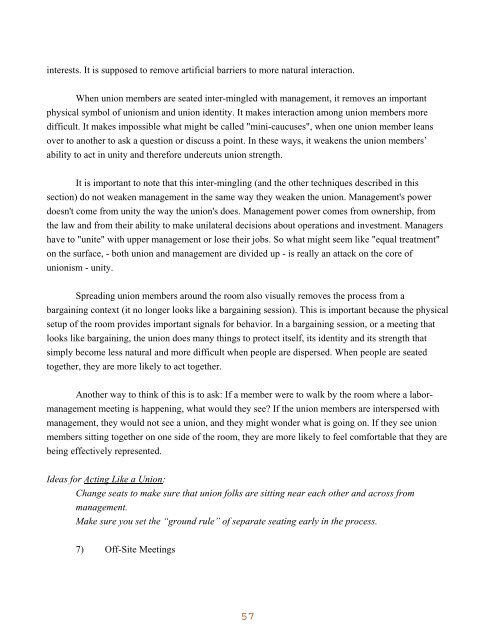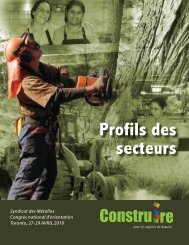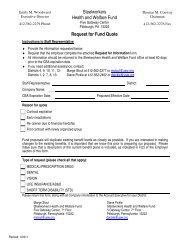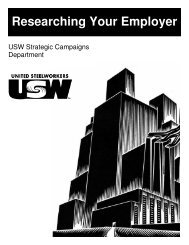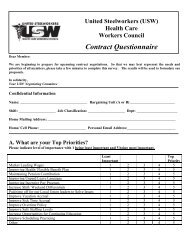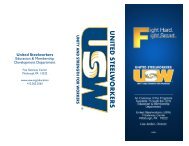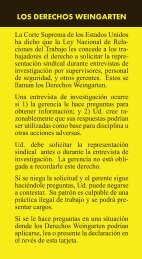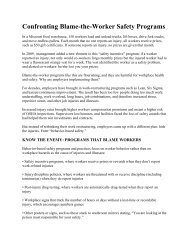Union Approach to Health and Safety: - United Steelworkers
Union Approach to Health and Safety: - United Steelworkers
Union Approach to Health and Safety: - United Steelworkers
You also want an ePaper? Increase the reach of your titles
YUMPU automatically turns print PDFs into web optimized ePapers that Google loves.
interests. It is supposed <strong>to</strong> remove artificial barriers <strong>to</strong> more natural interaction.<br />
When union members are seated inter-mingled with management, it removes an important<br />
physical symbol of unionism <strong>and</strong> union identity. It makes interaction among union members more<br />
difficult. It makes impossible what might be called "mini-caucuses", when one union member leans<br />
over <strong>to</strong> another <strong>to</strong> ask a question or discuss a point. In these ways, it weakens the union members’<br />
ability <strong>to</strong> act in unity <strong>and</strong> therefore undercuts union strength.<br />
It is important <strong>to</strong> note that this inter-mingling (<strong>and</strong> the other techniques described in this<br />
section) do not weaken management in the same way they weaken the union. Management's power<br />
doesn't come from unity the way the union's does. Management power comes from ownership, from<br />
the law <strong>and</strong> from their ability <strong>to</strong> make unilateral decisions about operations <strong>and</strong> investment. Managers<br />
have <strong>to</strong> "unite" with upper management or lose their jobs. So what might seem like "equal treatment"<br />
on the surface, - both union <strong>and</strong> management are divided up - is really an attack on the core of<br />
unionism - unity.<br />
Spreading union members around the room also visually removes the process from a<br />
bargaining context (it no longer looks like a bargaining session). This is important because the physical<br />
setup of the room provides important signals for behavior. In a bargaining session, or a meeting that<br />
looks like bargaining, the union does many things <strong>to</strong> protect itself, its identity <strong>and</strong> its strength that<br />
simply become less natural <strong>and</strong> more difficult when people are dispersed. When people are seated<br />
<strong>to</strong>gether, they are more likely <strong>to</strong> act <strong>to</strong>gether.<br />
Another way <strong>to</strong> think of this is <strong>to</strong> ask: If a member were <strong>to</strong> walk by the room where a labormanagement<br />
meeting is happening, what would they see? If the union members are interspersed with<br />
management, they would not see a union, <strong>and</strong> they might wonder what is going on. If they see union<br />
members sitting <strong>to</strong>gether on one side of the room, they are more likely <strong>to</strong> feel comfortable that they are<br />
being effectively represented.<br />
Ideas for Acting Like a <strong>Union</strong>:<br />
Change seats <strong>to</strong> make sure that union folks are sitting near each other <strong>and</strong> across from<br />
management.<br />
Make sure you set the “ground rule” of separate seating early in the process.<br />
7) Off-Site Meetings


